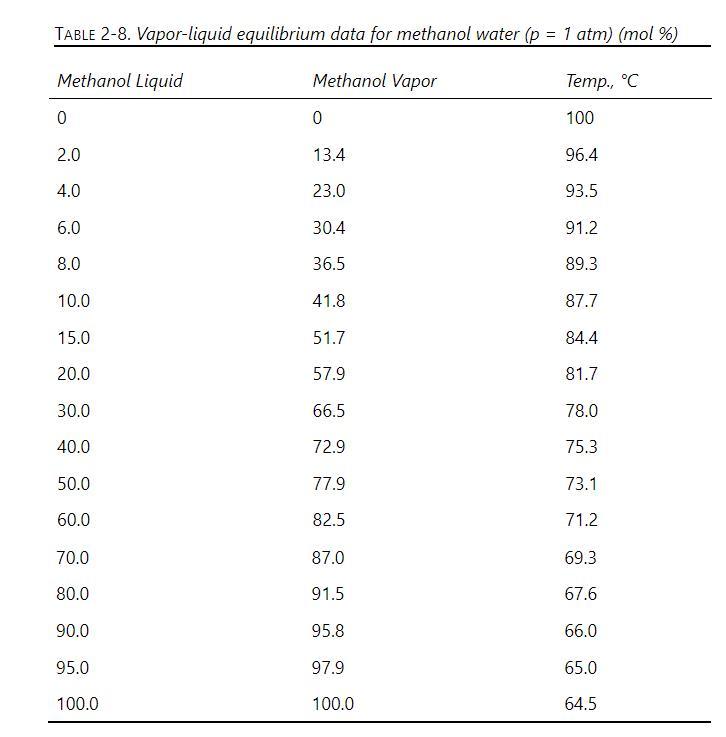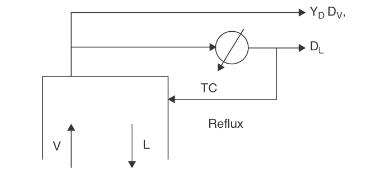A distillation column with a total condenser (TC) and a partial reboiler (PR) is separating a feed
Question:
A distillation column with a total condenser (TC) and a partial reboiler (PR) is separating a feed that is \(45.0 \mathrm{~mol} \%\) methanol and \(55.0 \mathrm{~mol} \%\) water. Feed flow rate is \(300.0 \mathrm{kmol} / \mathrm{h}\) and is a two-phase feed that is \(20 \%\) liquid. The bottoms product is \(5.0 \mathrm{~mol} \%\) methanol, and the average distillate composition is \(90.0 \mathrm{~mol} \%\) methanol. \(75.0 \%\) of the distillate product is a liquid from the TC and the other \(25.0 \%\) of the distillate product is vapor that is withdrawn from the top of the column \(\left(\mathrm{D}_{\mathrm{V}}=\mathrm{D}_{\mathrm{L}} / 3\right)\). Reflux is the same composition as the liquid distillate product. The boilup ratio \((\mathrm{v} / \mathrm{B})=2.0\). Pressure \(=1.0 \mathrm{~atm}\). CMO is valid. Use the optimum feed stage. Equilibrium data are in Table 2-8.

a. What are the mole fractions of liquid distillate \(\mathrm{x}_{\mathrm{D}}\), vapor distillate \(\mathrm{y}_{\mathrm{D}}\), and liquid reflux \(\mathrm{x}_{0}\) ?
b. Find values of \(\mathrm{B}, \mathrm{D}_{\mathrm{V}}\), and \(\mathrm{D}_{\mathrm{L}}\) in \(\mathrm{kmol} / \mathrm{h}\).
c. Determine the number of stages and the optimum feed location (stages above the PR).
d. Determine \(\mathrm{L}\) in \(\mathrm{kmol} / \mathrm{h}\).

Step by Step Answer:

Separation Process Engineering Includes Mass Transfer Analysis
ISBN: 9780137468041
5th Edition
Authors: Phillip Wankat





